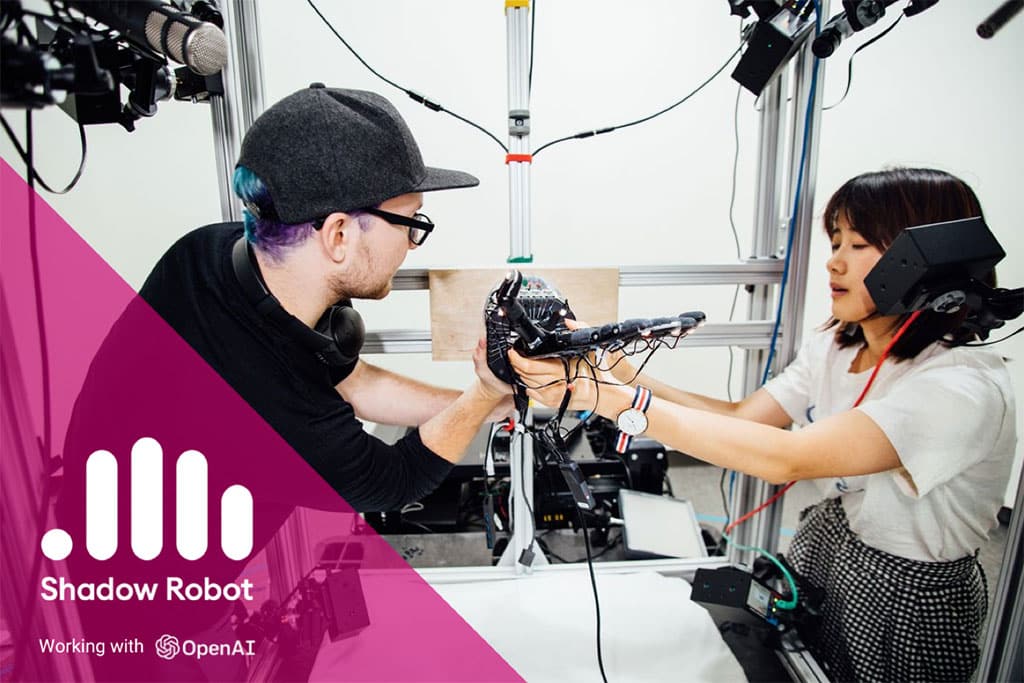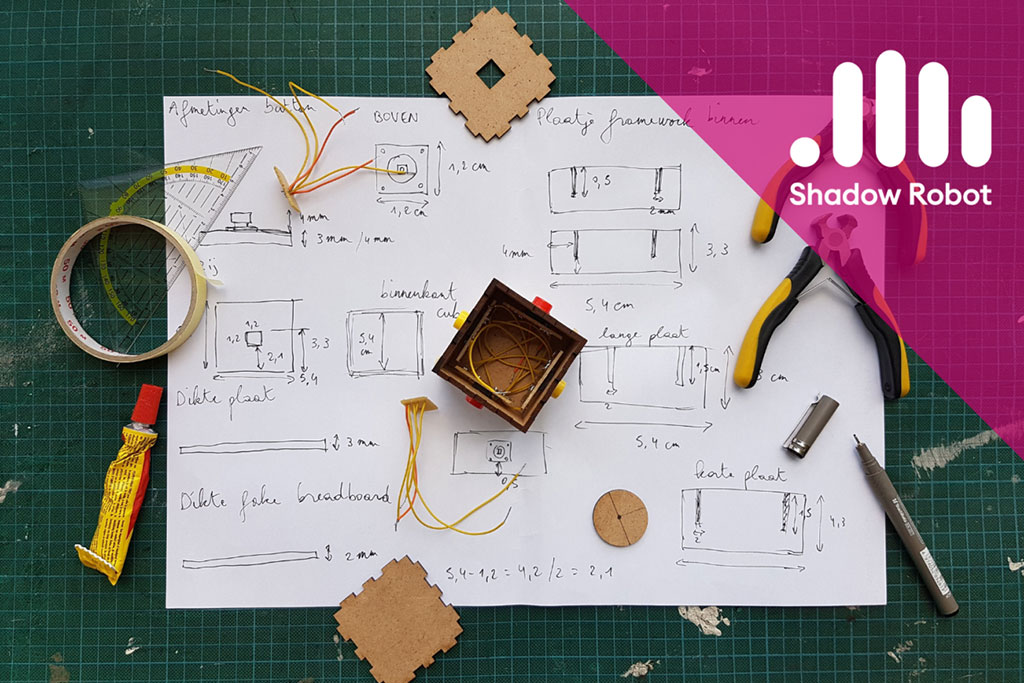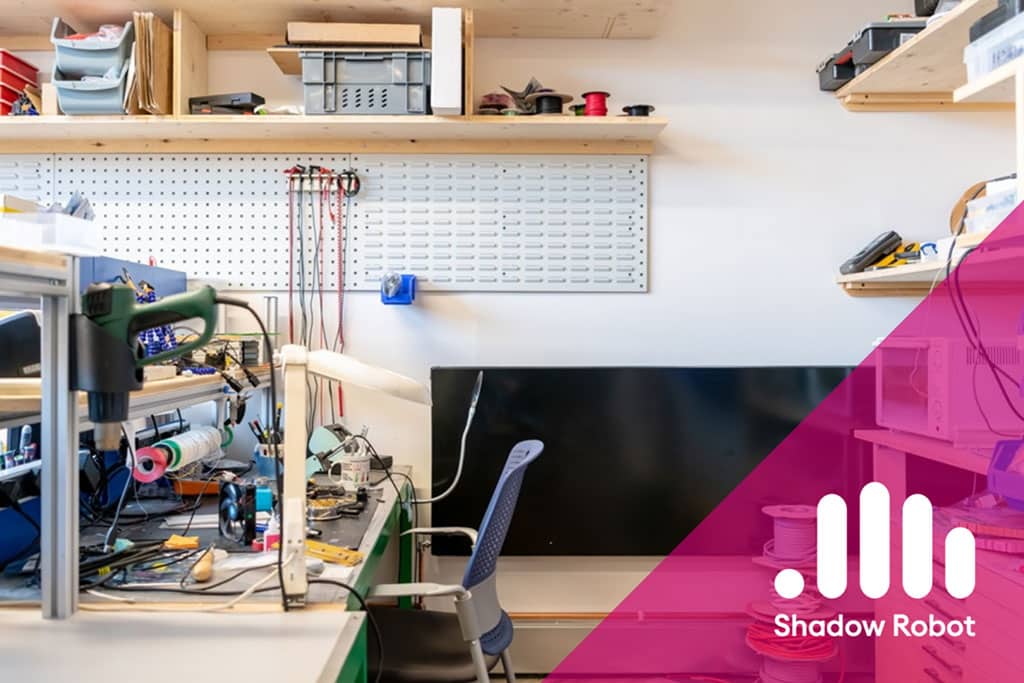Working with Shadow Robot
Jun 19, 2023
Building expertise in building robotics is hard – you need to understand mechanical engineering, electronics, firmware, control, software and a whole host of systems engineering. It’s not something for everyone, and sometimes it’s just easier to bring in the experts who have “been there, done that” to help you move further and faster.

At Shadow Robot, we’ve done a vast number of prototypes, design spikes, experimental technology developments, feasibility studies, concept system designs, and even just “yep, you can buy a thing like that already, here’s who makes it” meetings. We know what we’re great at doing, and we also know when to bring in a different group of experts to make things work.
What sort of things have we built with and for people? Well, as I look through the archives, I’m always amazed at the diversity of projects that a skilled robotic engineering team can deliver on. We’ve built award-winning robot kitchens. We’ve made Frankenstein’s monsters from artificial body parts for award-winning television programmes. We’ve made award-winning proofs-of-concept for airlines investigating telerobotics and telepresence. We’ve made a wide range of robot hands (some of which have also won awards!). We’ve integrated a whole range of different touch-sensing technologies into robots. We’ve helped build flexible soft robots for surgical research. We’ve prototyped new approaches to working in analytical and quality assurance laboratories. We’ve integrated novel cameras with custom robot fingertips on our robot hands to do welding. We’ve worked with mobile robots, wireless sensors, lasers, 4G and 5G testbeds, giant robots to dance with – it’s a deep well of expertise in developing new robot systems.
What do you need us to help you build?

People often ask me how these engagements can work. Well, I can’t name names, but I can tell you a few of the ways we’ve done projects in the past. If any of these sound like a way to tackle a challenge you have, you know where we are.
Sanity check meeting (We put it in the calendar as a “scoping meeting” but we both know what it is!) Sometimes you just want to talk to someone and say “Is this even a sensible thing to want to do? And if I did want to do it, what sort of thing should I be looking for?” We’re always interested in these conversations because sometimes they turn into the best projects! And other times we say “You should go and work with these people because they already work on things like this”.
Once we’ve done a sanity check, a natural next step is a piece of feasibility work. Typically this involves us testing some objects you have with some hardware we have. The idea of this is to understand whether the current state-of-the-art hardware is able to do the things you want to do at all, or are we going to need to develop some new hardware to make real progress. Often the feasibility work will include us working with you to help develop an initial roadmap for how you will make progress with the technology over the longer term, and we usually find at this point that we can sketch out a plan for the next couple of development steps as well.
Sometimes the feasibility work might be more like a technology spike – we might try and design something that could address the biggest risk in your wider plan. Or we might just want to understand if a piece of technology you already have could be used with our systems. We’ve been integrating curious things into robots for over 20 years so we probably have an idea how to do that!
Once we know if something is feasible, then we want to build out a development plan for it. Now this might look more like “You need some people who do X, here’s a few we know, let’s introduce them”, or it might look more like “You should get this hardware so you can work on this part of the system, and we can work on this part of the system in parallel”. Sometimes it’s very much “We know what the prototype could be, this is what it might cost to create that prototype, here’s some stages to make the prototype and progress through the development, and here’s a way of keeping control of the process”.

We always stage our development projects, and we make sure you’re as involved as you want to be. Our engineers will talk to yours, and our project managers will make sure that your project managers have the updates and analysis you need to track and resource the project. Our contractual approach is to have a framework agreement which sets out things like costs, intellectual property rights, and other parts of the legal framework, and then kick off individual packages of work with their own “Statement of Work”. This lets everyone feel comfortable about the level of work and commitment involved and makes programme management much simpler. Often an SoW will correspond to a single box on the high-level Gantt chart which makes it easy to understand what’s happening.
Finally, we make sure that we’re keeping your stakeholders informed as well. Often we can do a quick demo of something we’re working on that you can use to unblock decision-makers. Sometimes getting them “hands-on” with the hardware is what’s needed. And sometimes you want us to support your world demo tour as you take your prototype around the globe to prove your ideas.
Let us know what the problem is, and we can see how Shadow’s unique skills can move your project forward.
If you’re interested in working with us, check out our Robotics Consultancy page.